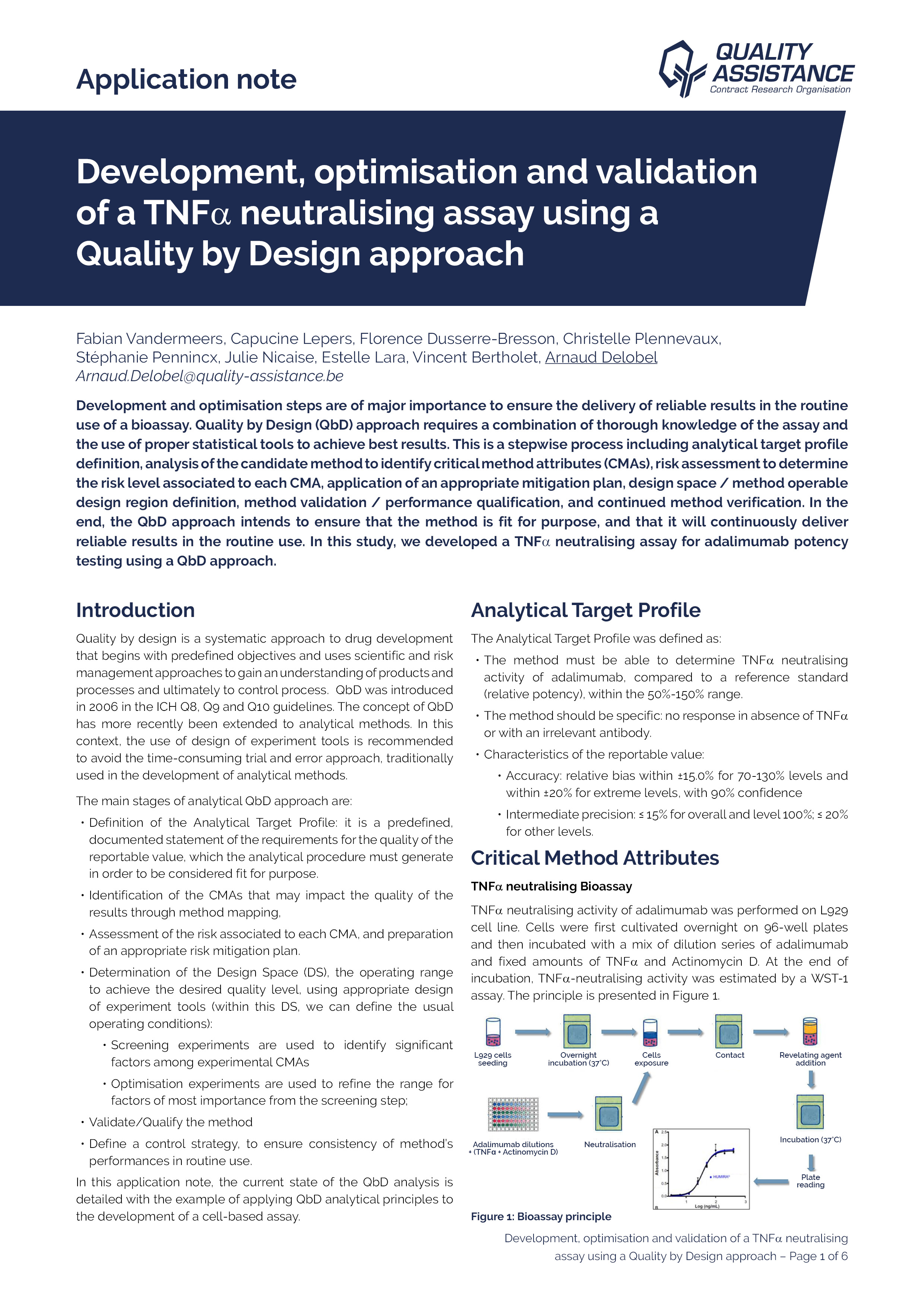Development, optimisation and validation of a TNFα neutralising assay using a Quality by Design approach

Development and optimisation steps are of major importance to ensure the delivery of reliable results in the routine use of a bioassay. Quality by Design (QbD) approach requires a combination of thorough knowledge of the assay and the use of proper statistical tools to achieve best results. This is a stepwise process including analytical target profile definition, analysis of the candidate method to identify critical method attributes (CMAs), risk assessment to determine the risk level associated to each CMA, application of an appropriate mitigation plan, design space / method operable design region definition, method validation / performance qualification, and continued method verification. In the end, the QbD approach intends to ensure that the method is fit for purpose, and that it will continuously deliver reliable results in the routine use. In this study, we developed a TNFaα neutralising assay for Adalimumab potency testing using a QbD approach.
Using a QbD approach, we developed a TNFaα neutralising assay capable of fulfilling the Analytical Target Profile. Statistical Design of Experiment was applied to evaluate the effect of the different factors and to choose the optimal parameters. The performance of the resulting method was finally evaluated according to USP <1033> guideline. Results of the validation showed that a robust method was obtained with a satisfactory performance. In the end, QbD approach applied to method development helps to better understand the method variables, which reduces the risk of failure during method validation and the routine use of the method.